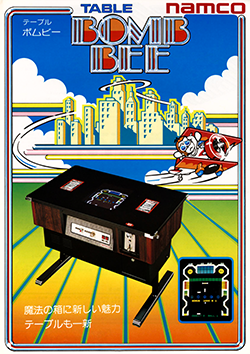Reception and legacy
Bomb Bee was not a success when it was released. According to Matt Barton, the author of the book Vintage Games 2.0, the game did not sell well and likely sold the same amount of machines as Gee Bee, a game that didn't meet sales expectations either. [5] The success of Namco's later release Galaxian , a revolutionary shooting game, is believed to have contributed to its failure. [6] When Galaxian proved successful, Namco offered to bundle Bomb Bee machines with Galaxian to arcade owners in order to clear inventory. [6]
Retrospectively in 1998, Earl Green of AllGame said that outside a few minor differences, Bomb Bee was largely the same as its predecessor. However, he noted that the game's usage of a full-color display, and being among the earliest creations by Toru Iwatani, made the game of historical value. [4] In his blog Before Mario, Erik Voskuel says that Bomb Bee marks the first collaboration between Namco and Nintendo, two developers that would work together on many more titles, making it a historically-significant game. Voskuel also says that Bomb Bee is notable for being the first appearance of a third-party title on a Nintendo console, and being among Iwatani's earliest creations before Pac-Man . [7]
This page is based on this
Wikipedia article Text is available under the
CC BY-SA 4.0 license; additional terms may apply.
Images, videos and audio are available under their respective licenses.

